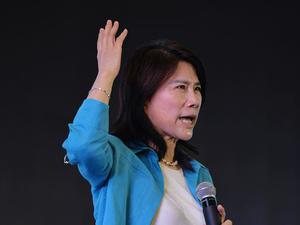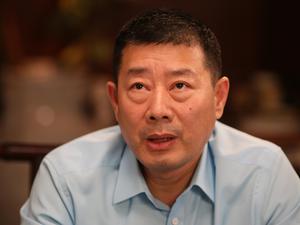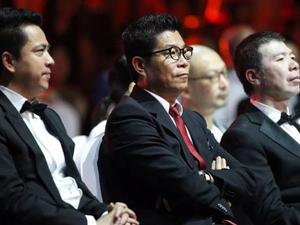来源:全球财富管理论坛
荷宝投资首席执行官Gilbert Van Hassel参加全球财富管理论坛2021北京峰会并作主题发言时表示,疫情给全球带来危机的同时,也带来了提高社会可持续性的机会。当前,自然环境的恶化加剧了病毒跨物种传播的几率;疫情使得全球诸多经济体陷入了严重的衰退,加剧了贫富差距;气候变化及生物多样性的丧失也将影响人类健康。因此,可持续发展对实现全球绿色复苏、以更好的应对未来的挑战具有重要意义。从融资端来看,需要在可再生能源、医疗、教育、住房、交通和基础设施领域投入更多资金。从投资端来看,可以通过深入可持续性研究、不断完善可持续性战略,同时支持绿色复苏等。
以下是主题发言全文。

在GAMF2021北京峰会上的发言
Gilbert Van Hassel
尊敬的嘉宾们,大家早上好、中午好、晚上好。很高兴在2021全球财富管理论坛北京峰会上,与大家共同探讨全球经济绿色复苏背景下的ESG投资问题。
这显然是一个既重要又紧迫的话题。我们不能忽视,疫情夺走了全球数百万人的生命。同时当前的危机也给我们所有人带来了让我们的社会将来更具可持续性的机会,也可以说是一种责任。
诺贝尔奖获得者经济学家密尔顿·弗里德曼曾说过一句名言:“只有实际发生或感知到的危机才能带来真正的改变。危机发生时采取的行动取决于周围的想法。”
那么有什么通过促进可持续复苏和带动可持续投资以推动可持续发展方面的方法呢?
我想和大家分享三个话题:第一,能帮助我们实现绿色复苏的蓝图;第二,通过可持续投资实现这种可持续复苏的方式;第三,荷宝如何实现这种可持续投资。
实现绿色复苏的蓝图
让我们先谈谈可持续复苏的蓝图。
当前的疫情不仅仅是一个健康领域的挑战。新冠肺炎疫情在可持续性方面给我们上了重要的一课,即大多数的可持续性挑战都与其他可持续性问题相互交织。我想这样解释:自然环境变差增加了动物向人类传播病毒的可能性,随之而来的全球疫情夺走了数百万人的生命。疫情同时还令经济陷入了严重的衰退,并加剧了不平等。虽然我们现在幸运地研发出了新冠疫苗,但仅靠疫苗无法降低未来发生健康危机的风险。
其他可持续性方面的挑战也是一样。举例来说,气候变化和生物多样性丧失不只关乎大自然,与人类健康、我们的粮食生产体系以及我们的价值链和经济同样息息相关。这令可持续发展变得复杂:我们怎样才能以系统的方式解决这些相互关联的挑战呢?
好消息是世界有着可持续发展的蓝图。在2015年,全世界的领导人都接受了可持续发展目标(SDGs)。这些目标旨在消灭贫困与饥饿,促进健康、教育与可持续发展,并保护我们的地球。
凭借这些可持续发展目标,世界在历史上第一次有了让当前和未来几代人的世界变得更美好的全球蓝图。
这些可持续发展目标还给予了我们可持续复苏方面的指导。联合国曾经说过可持续发展目标“对能够带来更加绿色包容的经济以及更加强大韧性的社会的疫后复苏至关重要。”
实现这些可持续发展目标同时还能确保我们有能力更好地应对将来的挑战。如果我们能够建立更强大的医疗卫生系统,减少生活在极度贫困中的人口,减轻性别的不平等性并构建更加健康的自然环境,就能在下一次危机来临时准备得更好。
但这些可持续发展目标十分大胆,而全世界都同意在2030年实现这些目标。政府表示这需要金融部门的参与。那么作为投资者人,我们能做些什么呢?这引出了我想说的第二点,如何通过可持续投资实现可持续发展目标。
通过可持续投资实现可持续发展目标
融资是可持续发展目标面临的一个障碍。为了实现这些目标,世界需要在可再生能源、医疗、教育、住房、交通和基础设施等领域投入更多的资金。
越来越多的投资者开始支持这些目标。我们看到金融部门正在发生着巨大的变化。像我们多年来所做的那样,全世界的投资者都正在将可持续性特点融入其投资战略之中。
我想用一些数据予以说明。2020年是可持续投资创纪录的一年。晨星的研究显示,纳入可持续性标准的在管资金规模达到了1.7万亿美元,比2019年增加了29%。并且还有许多待开发的潜力:拥有103.4万亿美元在管资产的3000多位资产所有者与管理者表示将遵守责任投资原则。可以想见,这一体量的资金如果都用到对的地方将带来怎样的好处。
投资者帮助实现这些可持续发展目标的一个方法就是对那些提供可持续发展目标解决方案的公司进行投资,同时减少对那些给目标造成负面影响的公司的投资。投资者想要产生影响的另一个方法是通过积极所有权。作为所投公司的股东,我们可以通过在股东大会上投票和参与企业运营来令其更可持续。金钱可以说话,而我们有能力让其发出的声音是可持续的。
荷宝的可持续投资实践
荷宝是一个研究型投资机构,而这指的是基本面、定量与可持续性研究。通过深入研究可持续性,我们能够不断完善自己的可持续投资战略,并以此支持绿色复苏。
我将通过几个例子说明我们是如何通过投资实践和积极所有权做到这点的。
投资
我们的目的是通过研究制定出对财富和福祉都有益的创新战略。举例来说,荷宝是世界上最早创造出能够分析企业对可持续发展目标的影响的框架的公司之一。一旦我们了解了企业能对可持续发展目标造成多大的积极或消极影响,便能将资本分配给那些推动积极变化的企业。
另一个例子涉及气候变化。我们在去年十二月启动了创新的关注气候的固定收益战略。这些是世界上最早的,完全符合欧盟与巴黎协定一致的投资的基准监管条例的全球固定收益战略。这项举措如此之新,以至于需要用我们与该领域专家Solactive共同新创造的气候指数衡量这些战略,因为市场上目前还没有这方面的基准指标。
这些战略还与我们自己的净零承诺高度一致 —— 我们希望通过该承诺于2050年在我们的整个资产管理规模实现净零温室气体排放。并且不止我们有这样的雄心:如今世界近一半的资产都进行了净零承诺。
积极所有权
资产配置并非投资者带来改变的唯一方式,还有一种方法是积极所有权。我们就几乎所有可持续性问题与被投资企业合作了逾15年。举例来说,我们正在中国就气候变化问题接触一个主要的能源供应商,而该公司最近表示他们欢迎荷宝在制定适当减排战略方面给予帮助。这是共同合作产生影响并解决挑战方面的一个很好的例子。
此外,我们并未止步于与企业打交道,我们在与政府打交道方面也走在前列。这是一个能够实现积极影响的重要领域。
巴西就是一个具体的例子。作为巴西债券与股权的长期投资者,巴西如何应对森林砍伐和气候变化这两个该国的主要挑战对我们十分重要。这不仅是一个关乎整个世界的环境与社会责任问题,还是我们投资决策的业绩表现的实质性影响因素。
我们和其他投资者一起与巴西副总统探讨过这一问题。巴西政府愿意与投资者讨论这些问题本身就是一个重要信号,我们对此表示感激,但讨论本身并非最终目标。需要实现的最终目标是降低森林砍伐率并通过适当执法打击环境犯罪行为。
虽然现在谈论这种接洽能否带来积极结果为时尚早,但这是一种新现象的明显例证:投资者主导的与政府部门的接洽。
以上是我想要跟大家分享的一些想法,它们强调了一个重要原则。我认为可持续性方面最大的挑战之一就是忽略当前的机会。可持续复苏需要社会作出重大转变,而这意味着会有赢家和输家。那些能够选择赢家 —— 也就是可持续性方面的领导者 —— 的投资者将会获利。这其中蕴藏巨大的机遇。而且,像我常说的那样:如果你能关注可持续性,就能成为一个更好的资产管理者。
我希望大家通过研究如何用自己的投资决策推动可持续复苏来抓住这一可持续性机遇。我相信我们可以通过共同行动带来可观的变化并创造财富和福祉,这也符合社会和我们行业的利益。
Speech at GAMF 2021 Beijing Summit
Gilbert Van Hassel
Dear distinguished guests, good morning, good afternoon and good evening. It is a pleasure to be with you at the 2021 Global Asset Management Summit and to address ESG investing in the context of the green recovery of the global economy. I sincerely hope that we can meet again in person in China in future events.
This is clearly an important and urgent topic. The pandemic has devastated millions of lives around the world, which we can’t take that lightly. At the same time, the current crisis also presents an opportunity, obligation almost, for all of us to make our societies more sustainable in the future.
Nobel-prize winning economist Milton Friedman once famously said: “Only a crisis – actual or perceived – produces real change. When that crisis occurs, the actions that are taken depend on the ideas that are lying around.”
So what are the ideas lying around sustainable investing that can promote sustainable development and lead to a sustainable recovery?
To answer this question, let me talk about three topics with you today:
1. The blueprint that can help us create a green recovery
2. The way sustainable investing can make this sustainable recovery happen
3. And how do we make sustainable investing actionable at Robeco
1. The blueprint
Let’s talk about the blueprint for a sustainable recovery first.
The current pandemic is not only a health challenge. Covid-19 taught us an important lesson about sustainability. This is that most sustainability challenges are interconnected with other sustainability issues. Let me explain: Whereas the degradation of nature made the transmission of the virus from animals to humans more likely, the global outbreak that ensued led to millions of lives lost. At the same time, it has plunged economies into deep recessions, and it has deepened inequalities. While we are fortunate to now have developed vaccines for Covid-19, a vaccine in itself will not reduce the risk of future health crises occurring.
And the same goes for other sustainability challenges. Climate change and biodiversity loss, for example, are not only about nature. They are likewise deeply connected to people’s health, our food production systems, our value chains and economies.
This makes sustainable development complex: so how can we tackle these interconnected challenges in a systematic way?
The good news is that the world has a blueprint for sustainable development. In 2015 all of the world’s leaders adopted the Sustainable Development Goals, the SDGs. These goals aim to eradicate poverty and hunger, promote health, education, and sustainable growth, and they seek to protect our planet.
With the SDGs the world has, for the first time in history, a global blueprint for a better world for current and for future generations.
These Sustainable Development Goals also give us a guide for a sustainable recovery. The United Nations said that the SDGs are: “vital for a COVID-19 recovery that leads to greener, more inclusive economies, and stronger, more resilient societies.”
Achieving the SDGs would at the same time make sure that we can better face future challenges. If we have stronger health systems, fewer people living in extreme poverty, less gender inequality, a healthier natural environment, we will also be better equipped when the next crisis strikes.
But these Sustainable Development Goals are bold. The world agreed to achieve them by 2030. Our governments also said that this requires the involvement of the financial sector. So what can we, investors, do? That brings me to my second point, on how sustainable investing can make this happen.
2. How can sustainable investing make this happen
Financing is one hurdle facing the SDGs. For these goals to be achieved the world needs to invest much more money in areas like renewable energy, healthcare, education, housing, transport and infrastructure.
Investors are increasingly getting on board to supporting such goals. What we see is that a massive change is happening in the financial sector. Investors around the world are integrating sustainability characteristics into their investment strategies, like we’ve also been doing for many years.
Let me illustrate that with some statistics. 2020 was a record year for sustainable investing. According to research from Morningstar, funds that incorporate sustainability criteria reached USD 1.7 trillion in assets under management, up 29% compared to 2019. And there is a lot of untapped potential: more than 3,000 asset owners and managers with USD 103.4 trillion in assets under management committed to the Principles for Responsible Investment. Imagine what happens if all that money is being used for good.
One way for investors to help achieve the SDGs is by financing companies that provide solutions to the SDGs, while reducing investments in companies that have negative impacts on the goals. Another way for investors to make a difference is through active ownership. As shareholders of the companies we invest in, we can vote at shareholder meetings and engage with companies to make them more sustainable. Money speaks and we have the power to let that voice be sustainable.
So how can we invest in the SDGs and its subgoals, like climate change? And how do we, at Robeco, make that more tangible? That brings me to my third topic.
3. How do we, Robeco, make SI actionable
Robeco is a research-driven investor. This means fundamental, quant, and sustainability research. By doing thorough research on sustainability, we are able to continuously improve our sustainable investing strategies and thereby support a green recovery.
Let me give you a few examples of how we do that – from our investment practices and our active ownership.
Investments
Through our research we aim to develop innovative strategies that contribute both to wealth and wellbeing. For example, Robeco was one of the first in the world to create a framework with which it analyzes companies’ impacts on the SDGs. Once we know how much positive or negative impacts a company has on the SDGs, we can allocate capital to those companies that are a force for positive change.
Another example is on climate change. Last December we launched innovative climate-focused fixed income strategies. These are the world’s first global fixed income strategies that are fully compliant with the EU benchmark regulation for Paris-aligned investments. This was so innovative that these strategies are being measured against newly created climate indexes which we developed together with Solactive, a specialist in this area, because such benchmarks were not yet readily available to the market.
These strategies also align well with our own Net Zero Commitment – through which we want to achieve net zero greenhouse gas emissions across all our AuM by 2050. And we are not alone with such an ambition: today nearly half the world’s assets is under a net zero commitment.
Active ownership
But asset allocation is not the only way for investors to make a difference. Active ownership is another. We have been engaging with investee companies for over 15 years on nearly all sustainability topics you can think of. For example, here in China we are engaging with one of the main energy distributors on the topic of climate change. The company recently said they would welcome Robeco’s help in formulating an appropriate emissions reductions strategy. That is a clear example of making impact and solving challenges together.
And we don’t stop at corporate engagement. We also are pioneering how to engage with governments. This is a key area in which positive impacts can be realized.
A concrete example is Brazil. As long-term investors in Brazilian bonds and equities, it is important to us how Brazil deals with deforestation and climate change – main challenges in the country. This not only is a matter of environmental and social responsibility that is relevant for the whole world, but also a financially material factor in our investment decisions.
We’ve discussed this issue with the Vice President of Brazil, together with other investors. The fact that the Brazilian government is open to discuss these matters with investors is an important sign, and we’re grateful for having that, but it’s not the ultimate goal itself. The ultimate goal to achieve is significant reduction in deforestation rates and proper law enforcement against environmental crimes.
While it is too soon to tell whether this engagement will lead to a positive result, it is a clear example of a new phenomenon: investor-led engagement with sovereign entities. For the sake of time, let me leave it there, and round up.
Closing
These are some thoughts that I wanted to share with you because they highlight an important principle. I believe that one of the biggest sustainability challenges is not seeing the opportunities. A sustainable recovery requires significant transformations of societies and that means that there will be winners and losers. If investors are able to pick the winners – the sustainability leaders – they will profit. That is a huge opportunity. And, like I said more often: if you focus on sustainability, you are going to be a better asset manager.
With that, I invite you all to seize this sustainability opportunity by investigating how your investment decisions can be a force for a sustainable recovery. I truly believe that with collective action we can accomplish major changes and create wealth and well-being, which is in the interests of both society and our industry.
Let‘s create a truly sustainable future together.
Thank you.

责任编辑:马青
APP专享直播
热门推荐
收起
24小时滚动播报最新的财经资讯和视频,更多粉丝福利扫描二维码关注(sinafinance)









